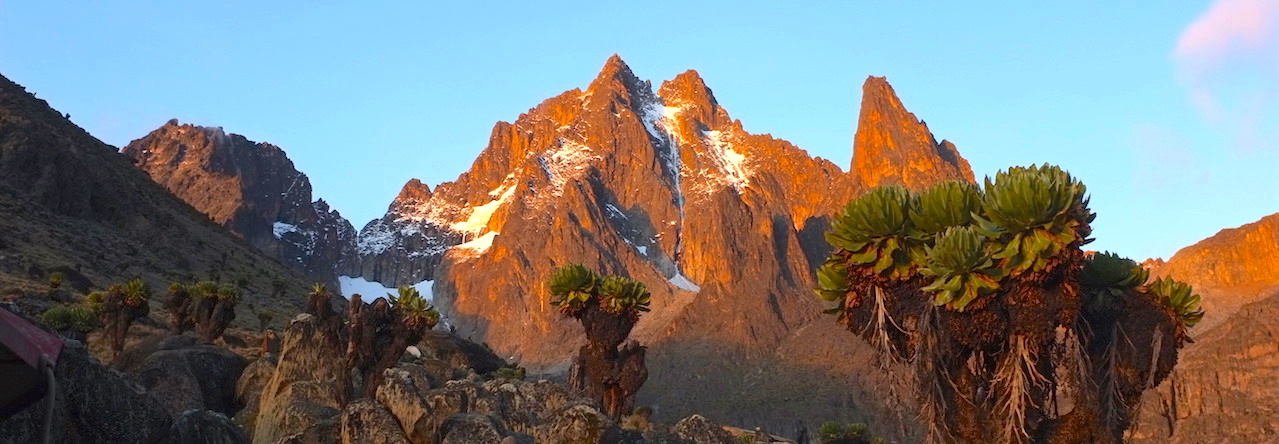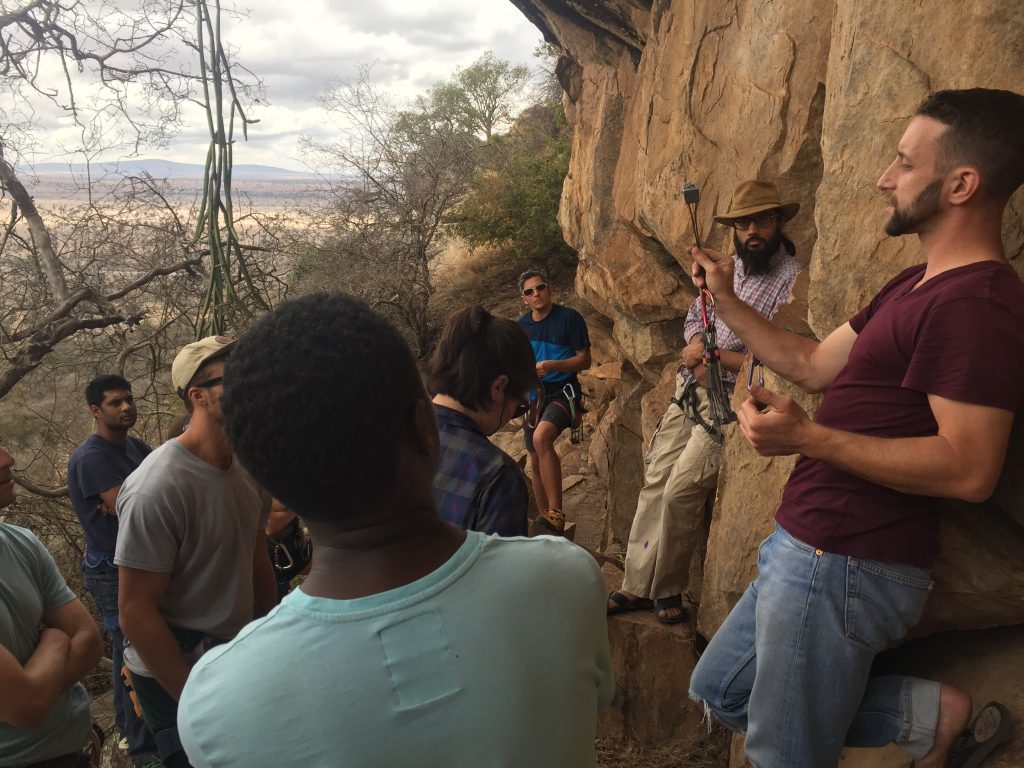Report from the third trad training weekend at Lukenya
The vast majority of climbing in Kenya is traditional climbing, where climbers place their own removable protection as they climb. Traditional climbing offers incredible freedom and flexibility to climbers, but can be much more daunting that gym and sport climbing, because of the amount of technical knowledge required. So how do we encourage new climbers to get out and experience all of the amazing routes that Kenya has to offer? Well, we meet up and have a party of course!
This past weekend, a group of experienced trad climbers and eager students got together in Lukenya to learn about gear, anchors, fall factors, rope management, lead belay and lead climbing technique.
Protection
We started off the weekend by learning about the types of protection available in trad climbing (active, passive, and natural pro) and got hands on experience placing gear and getting feedback from experienced climbers. The broken boulders at the base of Cakewalk crag provide an ideal playground for practicing gear placements from the comfort of the ground.
Anchors
Once we understood the nuts and bolts (and cams and hexes) of climbing pro, we moved on to anchors. In essence, a climbing anchor just a way of linking multiple pieces of protection together so that they all share the load equally and provide a strong base for your climbing team. Participants tried their hands at making SERENEA anchors, using different types of rigging and arrangements of protection.
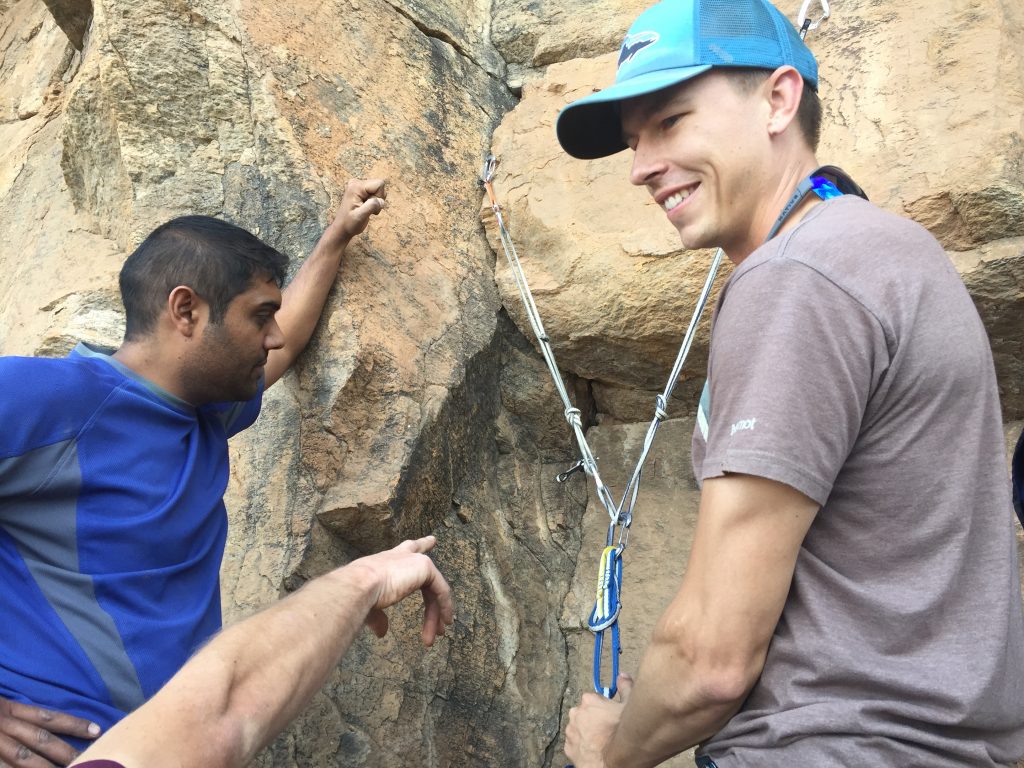 Mital and Vytas showing off a two-piece, self-equalizing anchor
Mital and Vytas showing off a two-piece, self-equalizing anchor
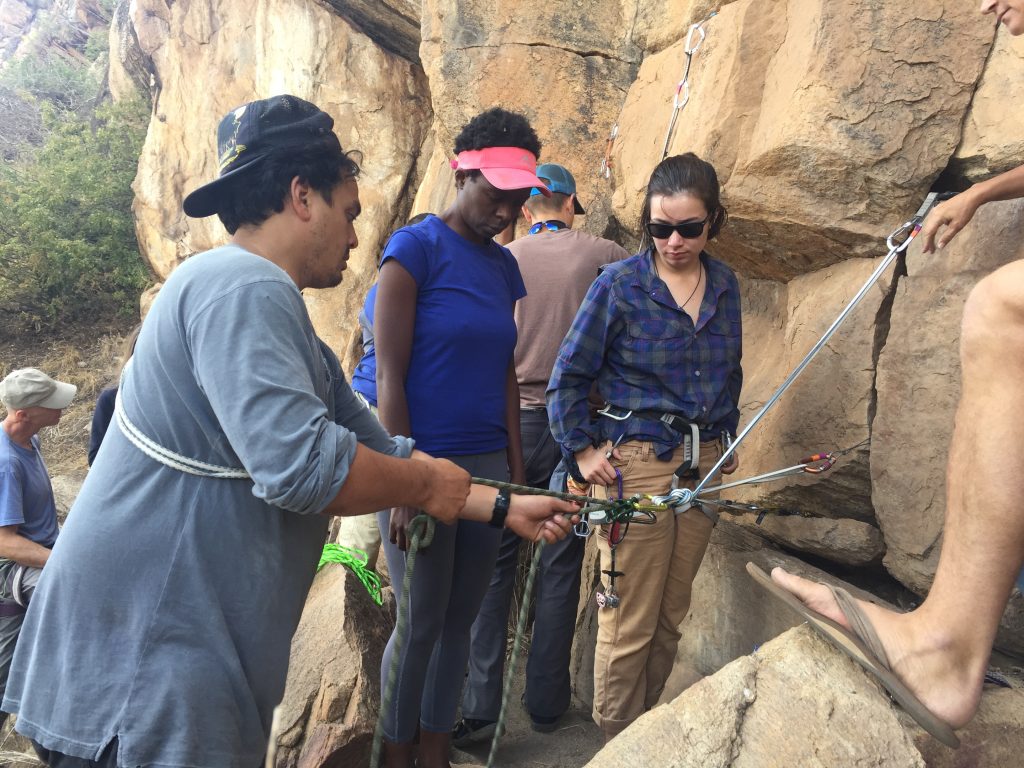 Nick, Liz, and Katie demonstrating belaying off of a three-piece pre-equalized anchor
Nick, Liz, and Katie demonstrating belaying off of a three-piece pre-equalized anchor
Leading
By now people were itching to put their skills to the test by actually getting off the ground, so we headed down to Boulder Crag and Jacob’s Ladder to talk about the whole safety system (harness, belay device, rope, pro, slings, biners, rope, harness),lead belay techinque, and the choreography of lead climbing. In supervised groups, teams practiced placing gear on lead, or mock-lead, depending on experience levels.
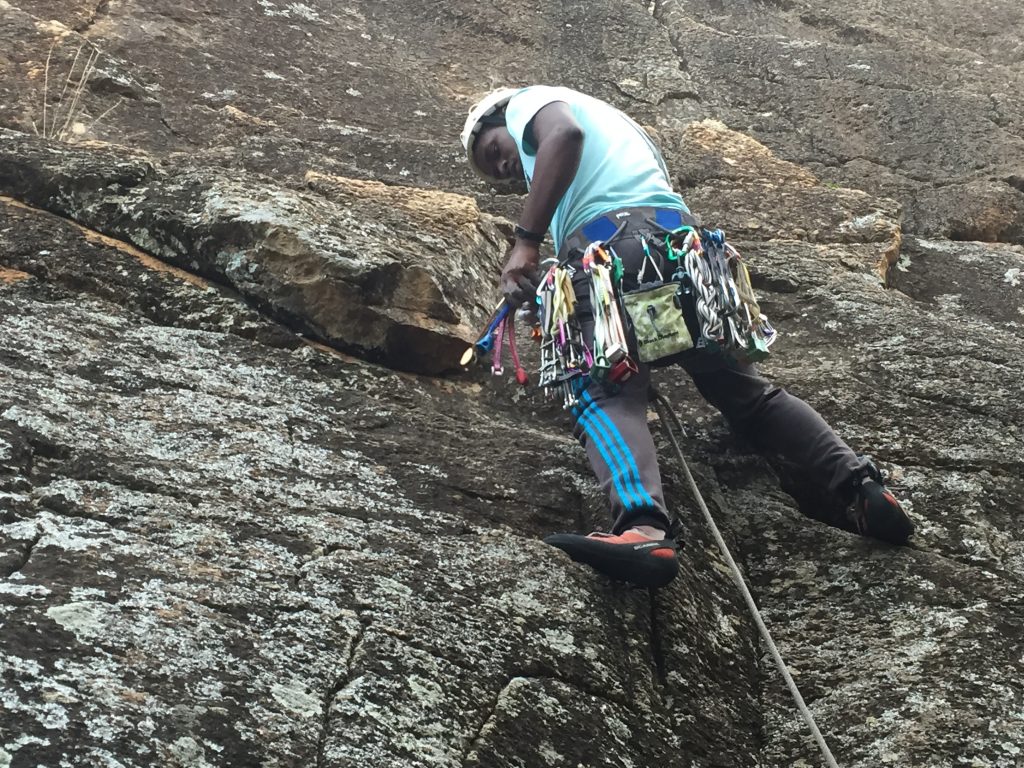 Denis on the sharp end, thinking about tricams
Denis on the sharp end, thinking about tricams
All in all, about a half dozen people logged their first trad leads and the stoke was high! It was really great to see so much enthusiasm for climbing in Kenya and to meet so many new, keen trad climbers!
The next day, everyone went out in teams to practice their skills, some getting their first taste of true Kenyan climbing…
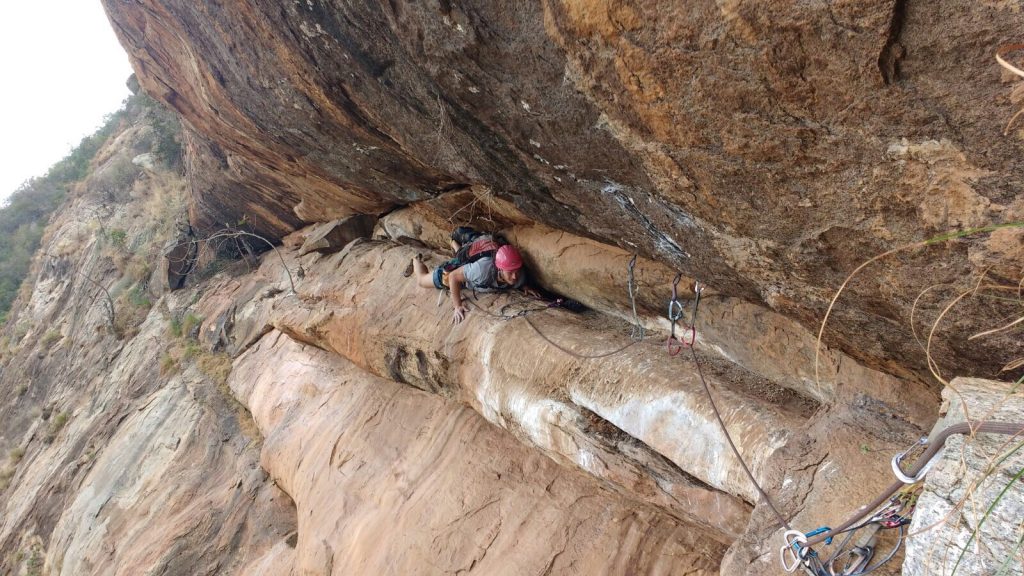 Because no Kenyan climb is complete without a belly traverse through bird guano?
Because no Kenyan climb is complete without a belly traverse through bird guano?
Join us!
We’ve been running these informal trainings for new trad climbers about once every six months, and topics have included:
- Types of protection and placements
- Building Trad anchors
- Lead belay for trad and handling twin ropes
- Mock leading
- Managing climbing lines and rope drag for leaders
- How to fall and catch falls on lead
- Multipitch techniques
- Belaying from above
- Rappelling/Abseiling
- Self-rescue skills
- Aid climbing technique
So what would you like to see at the next trad training clinic?
Links to more information:
More info on getting in to climbing in Kenya.
A list of our favorite picks for trad leads of all levels.
Climb on!
